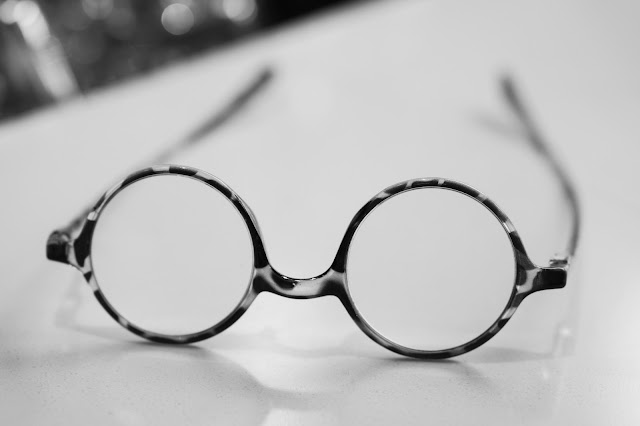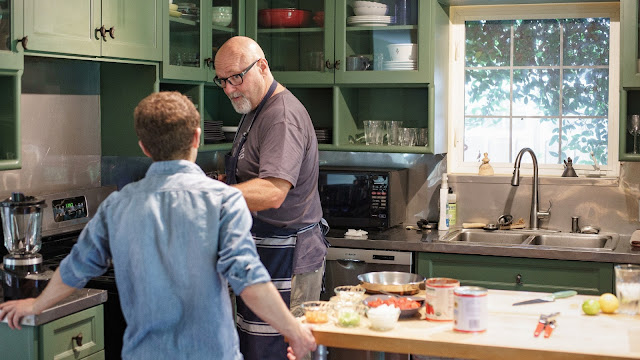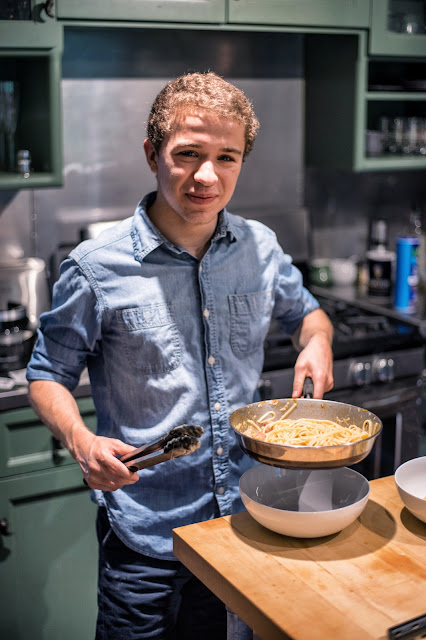On a bright and sunny afternoon, recently, I was cleaning my little studio and office space when I came across two reminders of time past. One was a tax return from 1997, and the other was a box of 8x10 inch color transparencies; mostly still life work for customers like Dell, Power Computing and Domain Magazine.
The numbers on the tax return were insane. While so much more money flowed through the business back then so much of it went back out to pay for film, processing, polaroid test materials, printing, huge studio rental and assistants. The overhead included a full darkroom, 3,000 square feet of downtown studio space and multiple sets of camera gear: Everything from 35mm (rangefinder and str) to an 8x10 inch view camera. Not included in the numbers was the insane learning curve investment (without the benefit of the internet) to master so many processes and so many ways of making images.
The odd epiphany for me is that when we distilled down all the costs we were on set or on location working about 250 days a year to net about what we do in the current time period working 60-70 days a year. The present business model is so downsized by comparison. My current studio and office occupies about 650 square feet (which I own instead of leasing), I can currently fit all the cameras I own into one roller case. I still own way too many lights. There's no darkroom. There are orders of magnitude fewer assistants and professional services involved. We seem to have done a good job of shedding costs while increasing the core, fee based income.
Those changes, from big space to small space, from lease to own, from many assistants to solitude, from huge investments in cameras to a meager (but smart) selection, happened gradually as we steered the business into digital imaging, starting around 1999. But what opened my eyes to the changing models was the diversification from "just" photography to writing books and articles about photography. One could make good, sustainable, renewable money with nothing more than a $1,000 laptop and the knowledge already gained. If that's all it took to add a significant amount of income to the business could we not also get rid of the hard costs and winnow down photography to its essentials and, in the process, spend less time to make the same final, net income? Seems like the answer is yes. As long as the changes you are making are in line with your market.
My son, Ben, was fascinated when he saw the 8x10 inch color transparencies. I talked him through the whole process of shooting large format and he was amazed at the complexity and craft basis for the work we did in those formats. But we both agreed that those were different times and those times weren't coming back. That train of thought led me to believe that the business itself continuously makes opportunities to take advantage of those ever reductive changes, and that basing a business on the last century concept of "needed" inventory, old school methodologies, and old school marketing would seem to be a financial dead end. Which led me to question why we, as a professional services industry, are in reality, very slow to change.
I liken it to Wayne Gretzky's famous line about not skating to where the puck is but skating to where the puck will be. If the gravity of change forces you to change because you've become ensnared in its grip you have arrived where the puck used to be and not where the puck is now. And waiting until a new norm has been safely established and proven to be correct is now more financially dangerous than constantly pushing forward to learn the new ways.
Now there are really only two things that imaging businesses must excel in; one is marketing and the other is creative creation. Nowhere in the equation is it any longer cost effective to horde an inventory of quickly depreciating equipment, nor is it an effective strategy to constantly overbuy.
In the realm of cameras I can easily and quite convincingly make the case that the vast majority of professional work being done has, as its final target, placement on the web. That could include banner ads for client websites, images for social media, portraits for LinkedIn, Facebook, and company websites or photographic illustrations for web advertising. Of the remaining placements most will be print advertising at one page or smaller and direct mail at 6x9 inches and smaller. For editorial photographers (we always seem to hear about sports photographers...) the target is generally the magazine website and the printed magazine page. Most images are used one page or smaller but even if they were used as double trucks the magazine are printed on high speed web presses and on the cheapest (read: low ink saturation, low res) papers. The takeaway is that none of these uses would be the least bit taxing to a top line Micro Four Thirds system like the GH4 or the EM5.2 and would certainly represent horrible and wasteful overkill for medium format cameras and 50 megapixel cameras; unless they were being used for an aesthetic consideration like the degree of focus ramp available.
I keep downsizing cameras and lenses here. We have three pairs of Sony cameras and a handful of lenses. When I pick a camera pair for a project I like to consider the parameters of the project and then match the system. The smallest format is the one inch sensor family of Sony RX10s. The middle format is the APS-C family of the a6300 and a6000. The big format cameras are the A7x bodies. It's rare that I mix and match. If resolution and sharpness are the only criteria I can select from any of the three families of cameras. If I'm shooting documentary video the RX10s get first crack. If I'm shooting classic portraits with lush, out of focus backgrounds then the A7xs get tossed into the camera bag. The process is pretty simple.
If I need anything else I will rent it. And in many cases, if I need something else I might also rent the operator that comes with it. If a client wants me to show up for a client interview and they have to see a prestige video camera on the set I'll hire an FS7 camera and its owner operator rather than try to get totally up to speed on yet another camera from yet another field. If client demands medium format photography (right.....) then I'll rent the system I need and toss it back to the supplier the minute I am finished with it. Ownership, maintenance, mastery and depreciation are no longer worth it so renting gear we might only use once or twice a year is my strategy.

Many years ago I read about a German fashion photographer who was at the very top of his game. I was stunned to read that he had no studio, no lights, no stands, no gewgaws and no car. I couldn't imagine it when I overlayed the demands of my studio at the time onto his approach. It seems that the only things he owned were: a camera body he had mastered. a favorite lens (that he shot with 90% of the time --- not a zoom). And a light meter he trusted. Everything else was rented for the project right in front of him. The wonderful things for him were the elimination of overhead and the lack of mental inertia that would have required him to use the equipment he owned instead of the new lights (or whatever) that he wanted to try. To, you know, push the limits of his current creative envelope.
A couple of weeks ago I looked around my space and the clutter appalled me. My desk was covered with paperwork. Two hulking filing cabinets were constantly in my left side peripheral vision as I sat at my desk. Over against one wall were two rolling tool chests filled with either cameras or junk. Perhaps the two categories were so intertwined I couldn't see the differences.
I finally just couldn't take the visual clutter anymore. I've totally cleared out one of the rolling tool chests. I found filters for old series 50 Hasselblad lenses, batteries for cameras that hadn't been made in years, a viperous nest of cable releases that I was certain I might need again one day, too many broken watches or watches with dead batteries. Old, battered cameras that had been given to me by some other suffering photo wretch in an attempt to declutter his own life; and way too many cables. Everything from SCSI connectors to VGA connectors. Stuff Mac users haven't needed in decades.
The process of paring down in arduous and not for the meek of resolve. Once I started in on the red tool chest I would not let myself stop. I filled trash cans. I sent stuff away to the next unlucky photographer bastards. And, in the glow of triumph, I hauled the tool chest off in the car to the local Goodwill. What a victory. Now I'm hard at work on distilling down flash equipment. I am equally overweight on things that flash.
There is a certain logic in using flash but more and more I am finding that interior work gets done with LEDs and florescent lights and the use of flash is more or less relegated to fill flash in sunlight. But so much of our buying wisdom is predicated on what was essential ten or twenty years ago when everything was lit by flash and ISO 100 was de rigueur. Not so much now. Even less so when I'm shooting with one of the RX10 cameras that sync at over 1/1.000th of a second. In that situation just about any flash will do. So why do we have six or seven 400 watt second mono-lights, in their requisite cases, cluttering up the studio shelves? Am I pining for the days when we needed 4,000 watt seconds to get the depth of field we needed with our large format cameras? I am not. The flash gear seems ripe for thinning next.
The new business model is to become the opposite of the old business model. Where before we came loaded for bear, with every possible (high dollar) solution to any imaging situation, it would be a lot more fun to turn down the stuff I never enjoyed doing anyway and then figuring out less burdensome ways of doing the stuff I do love to photograph. Smaller and lighter stuff along with creating a kind of imaging that looks simpler and more direct. A few pocket strobes instead of a cargo bay with a forest of C-Stands and Pelican cases of lights. A couple of RX10x cameras instead of a Think Tank roller full of big Nikon bodies and fat, fast lenses. A tripod and a new appreciation for less light rather than the ability to create a complete sunrise in a studio.
Fully a third of a recent video project's profits were generated in concept and writing. Another third in editing. Only a third of the money generated from the project actually came from the shooting. As shooting engagements get shorter and easier it's incumbent upon us as business owners to see where we can add value outside the time spent shooting. Concepting and testing concepts are valid tasks that can be billed. Storyboarding and story creation are perhaps more valuable than the actual shooting. Wouldn't it be just as much fun to be paid for thinking about a photography project in addition to just being paid to spend a day with a camera in one's hands?

I want to work toward the day when my studio is four white, bare walls punctuated by a small camera on a tripod. One light aimed into the right modifier. Nothing more. But I would like to bill insanely well for the creative vision that we'll bring to each project. Billing for what we know and feel rather than just logging in the hours or the days.

The disconnection of this concept for most photographers might be the idea that we have to do our business encounters the same way we did in the past. In the advertising scenario we worked for the advertising agencies. They created the concepts. They sold the concepts to the clients who approved and paid for the production that made those concepts concrete. Our power was limited by our need to be invited into the game by intermediaries. But over the last ten years the industry has been unceasingly flattened. Now, in many cases, the clients are working as though they are at a buffet. They've been selecting "vendors"; people they are comfortable working with, outside of the traditional agency paradigm. Outside the agency tent. We might get integrated into a job well before an agency to create a public relations image that subsequently gets pushed into an advertising project.
More and more often we're getting engaged to produce image catalogs for expanding uses. And these uses need curation, implementation and imagination. I think my days of waiting for oppressive purchase orders from advertising agencies are coming to a close, choosing instead to work more as part of a collaborative team instead of as a vendor brought in after the cake has been mixed and relegated to working the controls on the oven.
But everything requires a change of thought. A move from a business with an inventory of machines which stamp out "creative parts" and towards a consultancy that creates the ideas behind the creative parts and then produces them as an integrated part of a marketing process.
We should be licensing "looks" and "feels" and "styles" and "taste." Not just twiddling the controls on the machines.
When your space is cluttered your mind is cluttered, and in a panic you attempt to do everything exactly the same way you did on the very last job that turned out very well. But--- that previous job was done in a previous time and the currents of culture and commerce morph and change. I have come to believe that decluttering the physical space gives my mind more freedom to plan and create rather than reactively accept the confinements provided by people proffering visions that are different than mine.
I was reminded by the tax return and the sheets of 8x10 film just how little time there is to think when fear convinces you that one must be always working. Always working to an exterior agent's specifications.
And that, in a nutshell is why we're engaged in the current minimalist purge of studio clutter.



















































